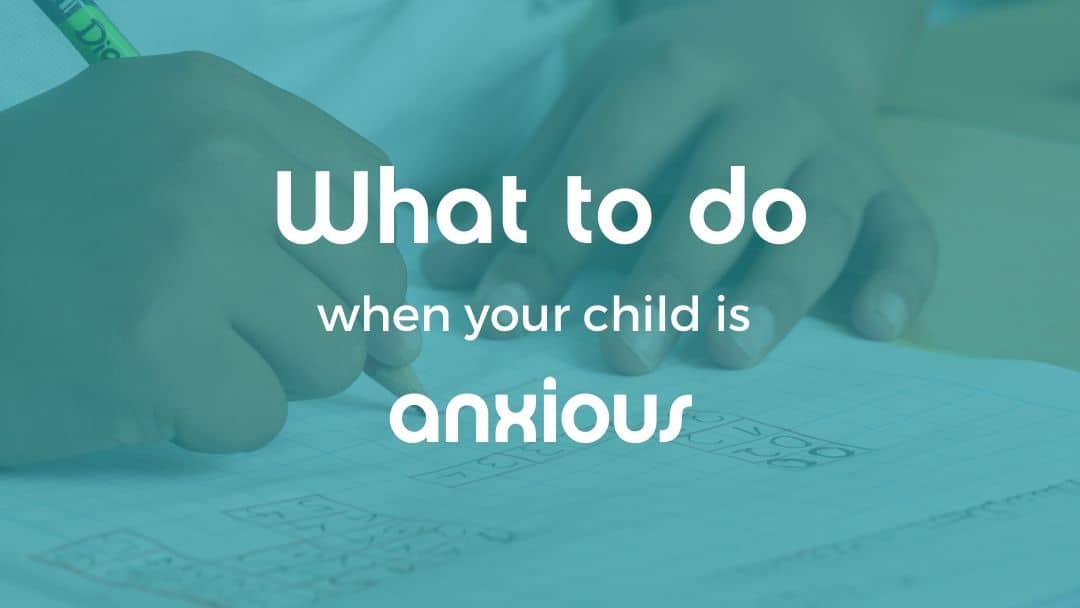When your child is anxious

In the two decades I have been in education, it has been alarming to watch the levels of anxiety increase in children. Child anxiety has become widespread, often crippling youngsters of the self-assuredness they need to be happy and successful in life. But there is good news. Doctors at Yale Child Study Center think they might have a “cure,” and it begins with parents.
Take a look at this NPR article:
For Kids With Anxiety, Parents Learn to Let Them Face Their Fears
This story from NPR provides a brief look into this new program at Yale that is having demonstrable success by working with the parents of anxious children, rather than with the children themselves. The story investigates one particular family who was struggling with anxiety. The family’s son learned that he can tolerate anxiety through facing his fears. Alternatively, the typical method would have been for the child to attend therapy. Not only can this add a layer of discomfort for any child, but if they are coming home to anxious parents or parents who continue to try to shield their children from discomfort, that would negate the positive effects of therapy. The Yale program has a completely different approach: to only counsel the parents. Parents learn how to ensure their child feels heard and loved, but also learns resilience.
Everyone wants their child to be happy. Rainbow Community School is truly a place of joy, but it is also a very REAL place. As much as we would love to protect every child from hearing hurtful words, being excluded from friendships, engaging in work that feels too challenging, dealing with grief, or sustaining physical injuries – all those things happen here. For example, almost every child hits a point in their education where they don’t want to come to school. Sometimes they are experiencing anxiety that they may not be able to fully articulate. It could be that another student was unkind to them. Perhaps they were absent one day and when they returned to school they felt behind and lost, creating discomfort and dread. Whether this lasts for a few days for a few years, it is heartbreaking for parents, especially at a school like Rainbow. It can be difficult for well-meaning parents to imagine anything other than joy.
The secret is to remember that true joy goes much deeper than emotions. Feelings of happiness, sadness, anger and bliss go up and down with our life’s circumstances. We have good days and bad days; but true joy is a way of being. True joy lies in the ability for us to move toward conflict with compassion, knowing we have the strength and wisdom to flourish. For children with anxiety, moving toward conflict is especially challenging, but ultimately prove successful.
Anxious child, anxious parent
In the two decades I have been a school leader, I have seen many trends. One positive trend is the decrease I have witnessed in autocratic parenting. Simultaneously, there has been an increase in parents using connection and compassion instead of fear, guilt, and other punitive measures. However, many parents find that balancing a desire to be compassionate while building responsibility and resiliency in their children can be a challenge. One way to address this is to draw clear boundaries and require children to do things they are afraid of or that they find uncomfortable. This is in line with what the Yale Child Study Center has found. Shielding children from discomfort is fueling an epidemic of anxiety.
When we protect our children too much, or when we jump in to defend them, or to solve their discomforts or issues we can inadvertently send the message that they are not capable. This can cause tremendous anxiety, as the child’s world feels out of control if they don’t sense they have the capacity to move through problems on their own. When a child comes home upset, they can sense if their parent is anxious about their unhappiness. Like a contagion, this anxiety can grow for each family member. However, if the parent is calm and caring, using statements such as, “I’m sorry, that must be so scary. What did you do to get through that?”, it builds the child’s sense of self-efficacy. These can be challenges that last for many months, and can feel like a lifetime to a child, or even to parents. But every time a problem improves – however gradually – or goes away, children learn they are able to endure. They learn through experience that this, too, shall pass. They begin to understand that joy is something inside them, and rely less on their external circumstances.
We live in an anxiety-producing world, and we all land somewhere on the spectrum of anxiety. Some have high anxiety and some have lower levels. What’s important is that parents recognize anxiety in themselves and their children for what it is – without judgment, without shame – so that they can move toward finding balance.
Ivy League Universities are naming anxiety and mental health issues as the biggest problems they now face with students. Admissions processes are changing to look for students who have a secure sense of social and emotional well-being.
At Rainbow, we want every child to be truly prepared for their future. That’s why social and emotional learning are integral to our 7 Domains program. If you think your child is anxious, we are also here to meet you with love, care, and comfort. You can always speak with your child’s teacher(s) and ask for honest practical advice on how to approach your parenting. Also, Will Ray and our counseling team are trained in best practices and here to help. All you have to do is ask, and remember you are not alone.








